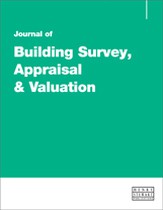Investigating and remediating leaks in basements and under plazas
Abstract
When roofs leak, the investigation and remediation is relatively simple and straightforward. This is not so with basement leaks. Investigating and remediating basement leaks differs from protocols employed for roof leaks in many respects. Rather than confining the investigation to the roof and associated components, the investigation of basement leaks must extend to the entire building envelope and adjacent areas in order to ascertain the cause of the water infiltration. Often, leaking can be stopped by simply regrading the land surrounding the building or improving roof edge drainage systems. Rather than excavating and attempting to remediate waterproofing membranes, other methods of relief must be found, such as installing drains and pumps, injecting a slurry of sodium bentonite into the ground adjacent to the foundations or under the slab, and applying negative side waterproofing systems on cracks and joints or areas of walls and slabs. Another method for stopping significant water infiltration through joints and cracks is drilling foundations and slabs-on-grade and injecting resins that swell on contact with water. Hydrophilic resins such as urethanes and acrylates can be injected into cracks and joints in walls and slabs, or hydrophobic resins can be injected through them into the surrounding soil to form water-impenetrable grout curtains.
The full article is available to subscribers to the journal.
Author's Biography
Justin Henshell is Principal at the architectural firm Henshell & Buccellato, Consulting Architects, based in Shrewsbury, New Jersey, USA.
Citation
Henshell, Justin (2012, March 1). Investigating and remediating leaks in basements and under plazas. In the Journal of Building Survey, Appraisal & Valuation, Volume 1, Issue 1. https://doi.org/10.69554/JDQP9438.Publications LLP
